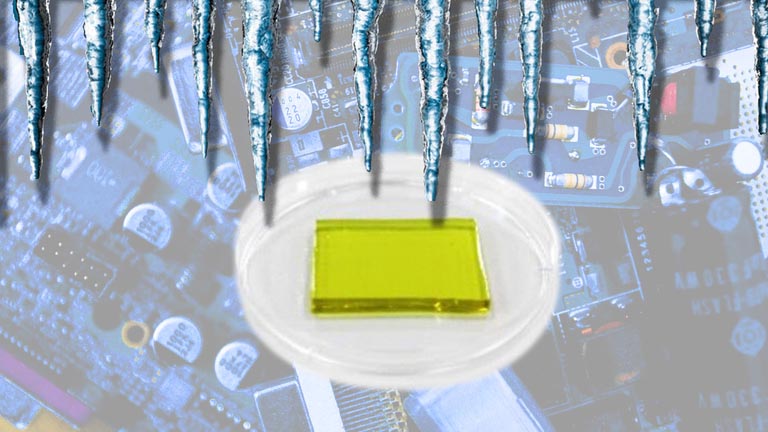Rehana Begg
Machine Design
A new hydrogel film transfers electrons when heated to generate power.
Today’s generation of electronics are super-powerful – we run our smartphones for long hours, crunching terabytes of data and even play Minecraft on our laptops. But using electronic gadgets for extended periods of time can cause them to overheat, slow down or even damage components.

Researchers have developed a hydrogel that promises to both cool down electronics and convert their waste heat into electricity.
Reporting in the American Chemical Society’s journal, Nano Letters, the researchers said they wanted to design a “smart thermogalvanic hydrogel that could convert waste heat into electricity, while also lowering the temperature of the device.” Scientists have developed devices that can do one or the other – but not both simultaneously, they noted.
 |
| Cool Down Electronic Devices and Recover Waste Heat. |
How it Works
The hydrogel, which is made of a polymer (polyacrylamide framework) infused with water and ions, generates electricity when it is heated. This occurs when two of the ions – ferricyanide and ferrocyanide – transfer electrons between electrodes, note the researchers. At the same time, a cooling effect occurs when water inside the hydrogel evaporates. After each use, the hydrogel is regenerated as it absorbs water from the surrounding environment.
To demonstrate how the material works, the researchers attached a hydrogel film to a cellphone battery. They were able to decrease the temperature of the battery by 68 °F (20 °C). The waste heat was converted into five microwatts (5 μW) of electricity.
The reduced working temperature ensures safe operation of the battery, and the electricity gathered is enough for monitoring the battery or controlling the cooling system, the researchers said.